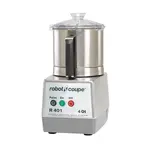
The Complete Guide to Hiring Restaurant Staff
Every dining experience is best served with a smile on the side, plenty of friendliness, and a dash of razzle-dazzle, depending on the customer’s need. Hiring staff members is a task that defines and paints a restaurant’s aesthetic, and it determines the quality of service and proper workflow. Employees best represent the restaurant’s temperament and experience and are crucial in shaping its reputation and building customer loyalty.
Whether you are a restaurant owner, manager, or recruiter, this guide will provide valuable insights and practical tips to make informed decisions when hiring and managing restaurant staff.
Hiring Restaurant Staff: Step-by-Step Guide
Below, we will discuss the composition of restaurant staff, the responsibilities of each team member, the process of selecting and interviewing potential candidates, and other important considerations.
Identify Job Roles and Responsibilities
The first step is determining the number of employees the establishment requires, which involves carefully assessing the workload and staffing needs of the restaurant. Next is distinguishing job positions and roles. It’s important to define the responsibilities and duties of each job role carefully.
This includes clarifying the tasks and expectations for each position and outlining any required qualifications or skills. Details matter at this stage; for example, instead of “Server,” consider using “Waitstaff” or “Front of House Server” to provide a clearer indication of the role.
Create Restaurant Job Descriptions
A job description outlines the details of a particular job within a restaurant setting. It is a comprehensive guide for potential candidates, existing employees, and management. In restaurants, job descriptions help with the following:
- Provide managers with clear criteria for evaluating employees
- Guide employees in their tasks and expected outcomes
- Assist recruiters in identifying the right candidate for the job
As an example of a brief job description for a restaurant server:
Provide customer service, take and deliver food and orders, handle cash, maintain cleanliness, and ensure guest satisfaction. Collaborate with kitchen/bar staff, handle inquiries/complaints, and adhere to food safety regulations. Previous experience is preferred, and strong communication skills are required. Available for evening shifts and weekends.
Post your Vacancy on Job Boards
A job ad must be accessible and clear. Using a job board is a great method to post a job vacancy for prospective employees and applicants. Most job seekers nowadays use websites to search for vacancies in their line of work within their residential area. A post should include a brief yet detailed synopsis of the job position, responsibilities, and required skills and experience.

We recommend looking for job portals related to the restaurants and hospitality industries. There, you might find a better pool of candidates; for example, Culinary Agents, Poached Jobs, OysterLink and Restaurant Opportunities Centers (ROC) United.
Review Resumes and Applications
This process involves screening and reviewing applicants’ resumes. Some recruiters may use technology, such as recruitment software, to evaluate resumes, saving time and effort, while others may review resumes manually. When evaluating resumes, it is important to consider years of relevant experience, qualifications, and soft and hard skills. It’s also crucial to be mindful of work history gaps, if any, and, if possible, request a cover letter.
Conduct Interviews
It’s important to create a rapport between the candidate and the person conducting the interview; they should be able to hold eye contact, ask specific questions, and allow room for individuals to express themselves.
Check References
Before making a hiring decision, conducting a thorough background check is crucial to verify the validity of the candidate’s information. It includes contacting the candidate’s previous employer to perform a reference check. Find out if the candidate has been let go for a reason and what work ethic they had in the previous restaurant.
There are many background check software available online for various fees. They offer full background checks for hiring purposes with access to specific information like civil and criminal records.
Make the Hiring Decision
Create a bias-free work environment by establishing hiring criteria free from discrimination based on gender, age, and ethnicity.
Offer the Job
This is the final step in the hiring process. Once the employer has selected the most suitable candidate for the position, they extend a job offer that aligns with market standards and the restaurant’s financials. It is crucial that the job offer is made in person and that the contract’s terms are explained thoroughly to the candidate. Additionally, a reasonable period for acceptance should be determined to allow the candidate ample time to consider the offer.
Onboard the New Hire
Restaurant onboarding is a procedure set by the restaurant to welcome employees into the work environment and acquaint them with the job needs, state regulations, safety standards, and hygiene requirements. It also covers the restaurant’s culture and objectives.
The onboarding program usually involves the following:
- Safety instructions and protocols
- Sexual harassment training, diversity, and inclusion process
- Acquainting employees with restaurants ethics, shifts, and PTOS
- Technical training
Some owners might also include a communications skill program
List of Common Restaurant Staff Positions

Front of House Staff (FOH)
It includes servers, hosts, cashiers, bussers, and other employees necessary for the restaurant’s service and operation.
- Hosts/hostesses: Their job is to greet guests when they arrive at the restaurant. They should be approachable, have good communication skills, and be hospitable. They take reservations, seat guests at their tables, and manage the waitlist.
- Servers: Their job is to wait on guests, take orders, guide guests through the menu, and recommend dishes; they are responsible for relaying orders to the kitchen and ensuring customer satisfaction.
- Bartenders: They usually manage the bar, have special training in mixology, and can prepare soft drinks and cocktails. They should be familiar with the menu, attend to customers, and provide drink recommendations.
- Food Runners: They work closely with the waitstaff; they serve food and drinks when the order is ready and deliver them to the table accurately.
- Bus Person: They are responsible for cleaning and clearing tables when guests are finished or in-between courses such as entrees, main courses, and desserts.
- Cashiers: Responsible for processing payments, managing dining bills, and handling inventory at the end of a workday. Some restaurants may assign waitstaff to handle billing to reduce extra expenses.
Back of House Staff (BOH)
Back-of-house regulates the day-to-day processes, plans menus, evaluates costs, and manages inventory.
- Chef: The chef runs the kitchen and delegates tasks among the staff. They manage meal preparation, decide on menu specials, oversee the cooking operation, and select the remaining kitchen staff.
- Line Cook: Also known as the sous chef, they supervise and ensure that all orders are prepared, served, and meet the required standards. They also monitor stock levels, place orders, and manage kitchen inventory.
- Prep Cook: Responsible for storing food following safety and hygiene regulations and preparing ingredients for dishes. They wash, chop, and portion ingredients for line cooks to use in menu dishes.
- Dishwasher: As the name suggests, they are responsible for cleaning dishes, glasses, workstations, and cutlery.
- Pastry Chefs: They prepare and plan dessert dishes, drawing on their background and experience in pastry. They should be able to create high-quality desserts quickly.
Management Staff (Back Office)
The back office holds the majority of administrative work and ensures safety measures and regulations. The roles of management vary depending on the level of the hierarchy.
- General Manager: Responsible for employee training programs and bookkeeping, ensuring food quality, reporting, and addressing customer experiences, complaints, and feedback. They also make budget decisions and develop strategies and goals for the restaurant. Interpersonal skills, communication skills, and administrative skills are necessary.
- Assistant Manager: The right-hand person to the restaurant manager. They oversee daily operations, manage employees, create work schedules, and boost productivity. Leadership skills, communication skills, and problem-solving skills are essential.
- HR Manager: Responsible for administering the restaurant’s business and corporate sectors. They serve as the communication link between management and staff members. Their responsibilities include interviewing and hiring employees, managing all employee-related issues, and implementing safety measures.
- Accountant: Responsible for the restaurant’s finances. They should be able to analyze financial data, determine inventory levels, and report cash flow. An accountant is also responsible for creating business plans to increase profit. Analytical abilities, attention to detail, and leadership skills are important.
- Marketing Manager: In charge of all actions and decisions regarding advertising and marketing strategies. They manage and generate ideas to increase franchise awareness and revenue. Innovation, adaptability, and understanding of consumer and brand needs are crucial skills.
What are the Challenges in Restaurant Staffing?
Every restaurant faces challenges that hinder the process of forming the dream team; here are some of the most crucial things to tackle during the restaurant staffing process.
Staff Shortages
Unfortunately, the current climate of the financial landscape can be problematic, especially regarding wages and acquiring the number of staff necessary. To avert this dilemma, we advise considering employee feedback and incorporating training programs that upskill staff. Although effective cost management in restaurants is important, we recommend considering good compensation packages to increase the loyalty of employees.
Local Hiring Competition
Before hiring employees, restaurant owners can scan the market situation and analyze the wages, perks, benefits, and compensation packages other restaurants offer. And then decide on a better job offer that can help persuade prospective employees to work in the restaurant.
High Staff Turnover Rates
When recruiting, most franchises and establishments face a high turnover rate due to a need for a good work environment, perks, benefits, and stability. To avoid this, restaurants should invest in quality talent and workers, give out rewards, avoid staff burnout, implement training programs and create a healthy work-life balance for all restaurant members.
To Wrap Up!
Although hiring the appropriate staff may seem lengthy and difficult, it can be broken down into easy steps to ensure all sectors are covered. Start by listing the job roles and responsibilities in a comprehensive job description, and post ads on job boards for optimal chances. Then browse through the CVs and conduct interviews in person.
Once the staff members are picked, remember to check references and then make a competitive job offer. From there, you can run a functional restaurant and continue to develop your thriving business with training programs and persuasive marketing.
FAQ
Q1: What is the importance of hiring restaurant staff?
Restaurant staff is a live representation of the ethics and image of a restaurant. When customers walk in, they’ll first notice the host and the gracefulness of their reception. A good staff guarantees a positive dining experience and ensures returning customers.
Q2: How to organize restaurant staff?
During onboarding, state schedules and clock-ins, train employees properly, and do a rehearsal opening by inviting family members to gather feedback and address upcoming issues.
Q3: Who is the most important staff member in a restaurant?
A manager dictates the rhythm, oversees the restaurant, and delegates the tasks among staff. They are crucial for a strong and thriving business, so obtaining a highly skilled manager with leadership and effective communication is key to a restaurant’s success.
Q4: How many employees does a restaurant need?
The number of employees needed for a restaurant differs; however, the average total is around four members for back-of-house for fifty tables.
Remember that the number of staff should include all members, BOH, FOH, chefs and their assisting staff, waitpersons, servers, and all employees, as mentioned above.
Q5: Which factors determine the size of a restaurant’s staff?
Consider the restaurant’s size, number of customer intake, foot traffic, and what the restaurant serves; for instance, a bartender is needed if the restaurant includes a bar. The more tables and customers are served, the more staff is needed.





